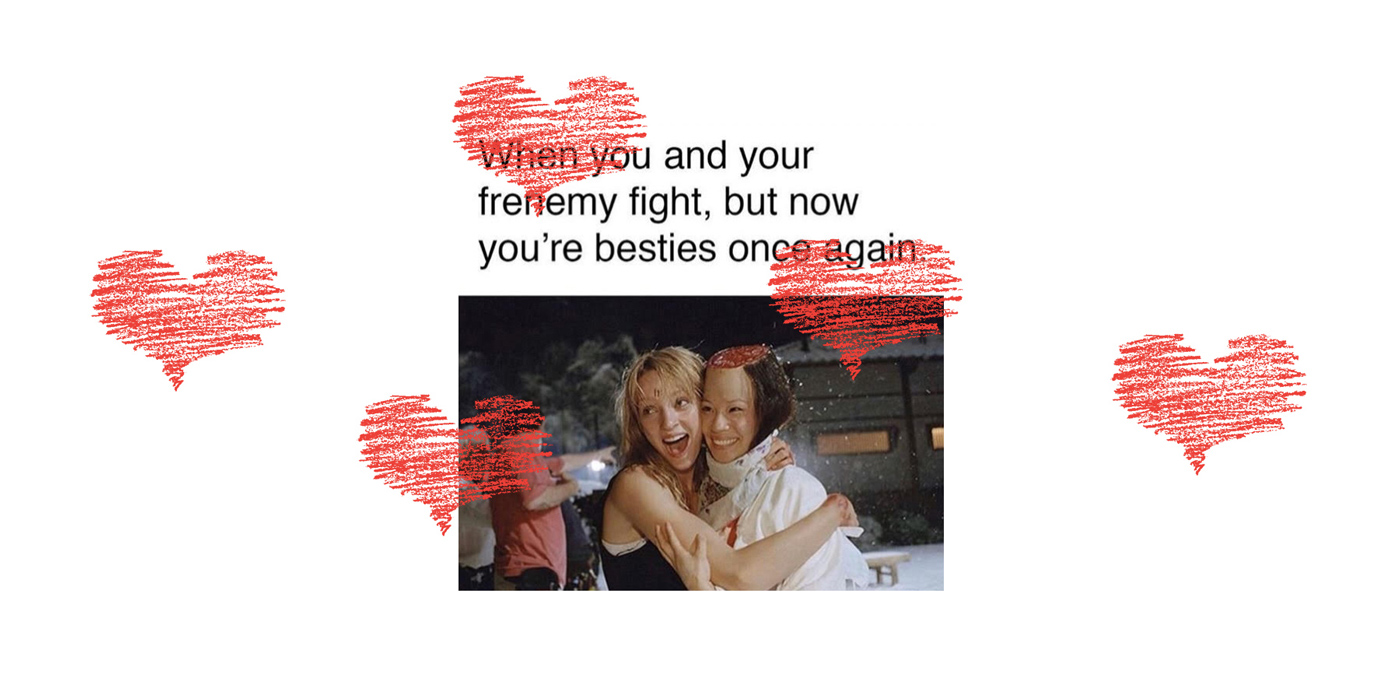Serena and Blair are BFFs (Best Frenemies Forever). Even in the meme format, they look past each other. One version goes like this: “Help me,” says Serena, “I’m lost.” “GPS, girl,” says Blair.
But GPS to where? This meme, like a few others in our circles of chattering media nodes, has cropped up quickly and decayed even faster. It is a time of acceleration and standstills. Whether we’re told to stay inside, forced to work, or forced out of work, we see the lines around us drawing closer, our loops of movement more and more circumscribed. On every side of us, contradictions pile up like the trash of the comfortable class put out for underpaid workers, the purview of the angelus novus made old again. It is a time of monsters (Gramsci said and endless others echo) and very visible enemies (the state and the ruling class), though we began this issue weeks and weeks ago thinking of the ambiguous frenemy, perhaps best exemplified now by those we long to see but are told to stay away from to avoid transmission.
If you’re feeling ambivalent about your social life being moved online, there’s a reason for that. “Reimagining Networks,” an interview with digital-media scholar Wendy Hui Kyong Chun, explores the historical and technological links between segregation, surveillance, and the construction of internet worlds. A feed is not so different from a gated community, operating under the rules of homophily and assuming that harmonious assembly requires likeness. Jorge Cotte and Chun discuss “the leakiness of friendship, the constant exchange that makes communication possible, the primacies of security and privacy, and the proliferation of networks.” As the premise of friendship encourages you to share more of yourself online, enemies double up as receivers behind the screens.
Intimacy is always shot through with ambiguities. In “Faraway Sisters,” Hannah Satz sifts through the dispersals and entanglements of stepsisterhood, reaching for her kin against the currents of patrilineality, uprootedness, and difference. Stepsisterhoods are a combination of obligation and diligent effort, and “in their most hopeful realization, they open into a form of solidarity. After the split of the parental couples, each of us daughters was still there — relating.”
If you’ve ever wanted to go on T, then you know that T is a frenemy. You want it, but you’re scared of it, because testosterone is great for others but somehow . . . not for you? Danny M. Lavery’s “The Stages of Not Going on T” is a cheerful, helpful, almost fussily considerate account of this deep internal spiral. “If someone were to drop a little bit of leftover testosterone on the ground, and I couldn’t find the owner and there weren’t any trans people around, and it was about to go bad, I would probably take it, in the interest of preventing waste.”
Finally, Anna E. Clark’s piece “Twilight of the Mentors” looks at a frenemy archetype: the mentor. Tracing the mentor through antiquity, Reaganism, and the present, Clark asks: Are you really friends if you’re both . . . extracting from one another? “Though presented as an unalloyed good, mentoring is an additional encumbrance, a way of shifting what should be the responsibility of the institution to the individual.”
Keep your friends close (six feet away) and your enemies closer. As for your frenemies . . . we trust you.
